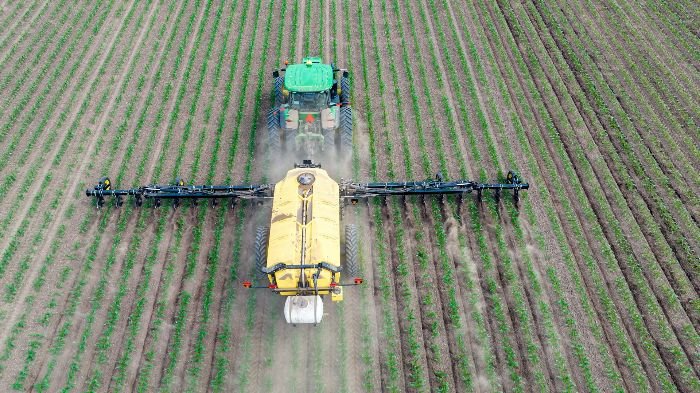Fertilizer types set the pace of growth, and the wrong match leaves plants hungry or burned. Liquids revive tired leaves fast but fade quickly, while slow-release feeds keep a bed moving when you cannot be there every week. Granular blends work only if watered in evenly, and organics won’t show much until soil life is active and warm. The clues are right in front of you – new leaves shrinking, color fading from the tips, or roots sitting in bone-dry soil. Ignore those signals and you pay in wasted product and stalled growth. The smart gardener reads the plant first, trials a small patch, and scales up only when the response is clear.
Key Takeaways:
- Match fertilizer form to watering rhythm and site conditions
- Use liquids when plants flag and need a fast lift
- Avoid heavy feeds on dry soil that trigger leaf scorch
- Check color shifts and new growth every week before changes
- Trial one strip, then expand only when plants respond
Table of Contents
Why Plants Need Fertilizers and When to Use Them
Fertilizers fill nutrient gaps that soil can’t supply fast enough, so plants keep growing on schedule. Think of them as concentrated nutrients that complement healthy soil and prevent stalls in leaf growth, rooting, and flowering. Use them to correct a shortage, not to replace soil care.
What is Fertilizer?
Fertilizer is a concentrated mix of plant nutrients applied to soil or leaves to correct measured shortages and maintain steady growth. It differs from compost or mulch because the main job is nutrient delivery rather than improving soil structure or moisture holding.
How Fertilizer Fills Nutrient Gaps
Plants pull minerals from soil as they grow. Fresh potting mixes often feed for 4-6 weeks, then growth slows unless nutrients are replaced. In garden beds, heavy rains over 1 inch in a day or frequent irrigation can leach nutrients down past roots. After a hard harvest flush, many vegetables stall without a top-up. If a soil test flags low nutrients, a balanced application gets growth moving again within 1-2 weeks, while soil amendments keep building long-term fertility.
Pro tip: I check growth tips at dusk once a week. If new leaves shrink in size or internodes shorten sharply, I test the soil before feeding to confirm a nutrient drawdown rather than a watering issue.
Where Fertilizer Helps Most
Use fertilizer when conditions push nutrients out of reach or demand spikes quickly. These are the common triggers I watch:
- Containers and raised beds with fast drainage
- Sandy or gravelly soils that leach after heavy rain
- Heavy feeders like tomatoes, roses, corn, and dahlias
- Lawns after frequent mowing during peak growth
- Newly planted annuals once starter charge runs 4-6 weeks
- Crops following a large pick where growth pauses
Keep the first application modest, then reassess. If growth rebounds within 7-10 days, hold the rate. If plants remain flat, confirm with a soil test before changing product or moving to different fertilizer types.
A short, measured approach keeps plants on track without overloading the soil. Feed to correct a real need, maintain soil health with organic matter, and let the plants tell you when the next adjustment is due.
Plant Nutrients and NPK Fertilizer Basics
Plants draw a small set of minerals to build leaves, roots, and blooms. Knowing the roles helps you feed with intent rather than pushing growth blindly. Read foliage, match the feed, and verify with a soil test on a steady schedule.
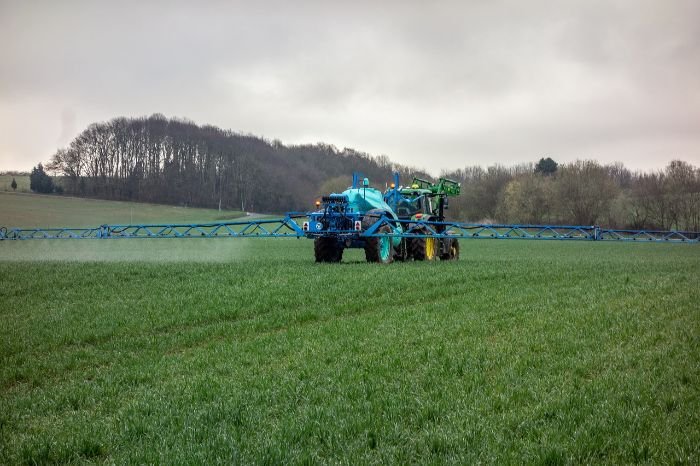
The Big Three – Nitrogen (N), Phosphorus (P), Potassium (K)
Nitrogen drives green growth. If older leaves yellow from the tip inward and growth slows, nitrogen likely dipped below what the bed can supply. A modest feed lifts color within 7-10 days.
Phosphorus supports rooting and early vigor. If transplants stall, roots stay short, and leaf undersides show a faint purple cast in cool soil, bring phosphorus into range.
Potassium stiffens tissue and supports bloom and stress tolerance. Edge scorch and weak stems during heat often signal low potassium. NPK fertilizer lists the ratio of these three so you can choose a mix that matches the stage you are pushing.
Pro tip: I walk beds at dusk twice a week. If new leaves shrink or internodes tighten sharply, I run a quick soil pH check before changing the feed to be sure the issue isn’t tied to nutrient lockout.
Micronutrients in brief
Micronutrients work in trace amounts but failures are obvious. Iron moves chlorophyll along new growth. If new leaves turn pale with green veins and your soil pH runs above 7.5, iron is present but locked; use an iron chelate labeled for alkaline soils. Magnesium sits in the chlorophyll core. If older leaves show interveinal yellowing while veins stay green, a magnesium bump corrects color. Zinc and manganese issues often show as small, distorted new leaves; correct the pH first, then use a labeled micronutrient blend so you do not overload one element.
Deficiency signals to watch for
Read where symptoms start and how they spread:
- Yellowing that begins on older leaves points toward mobile nutrients such as nitrogen or magnesium.
- Yellowing that begins on new leaves points toward immobile nutrients such as iron or zinc.
If symptoms persist after a light feed and proper watering, pull a soil test rather than layering products. During peak growth, review foliage weekly and retest soil every 1-2 years so plant nutrients stay within a workable range without overcorrection.
A clear read on roles and signals keeps corrections modest and timely. Feed to meet the stage, maintain proper soil pH, and let measured results guide the next move.
Fertilizer Types You’ll See on the Shelf
Pick a category before you pick a product. The right lane depends on how fast you need a response, how active your soil biology is, and how tightly you can control watering.
What are the two types of fertilizers?
The two types are organic fertilizer and synthetic fertilizer. Both feed plants effectively when matched to timing and site conditions, so base the choice on response speed and how your soil handles nutrients.
Organic fertilizer overview
Organic materials feed microbes first, then plants, so release tracks soil warmth and biology. Expect a steady feed over 4-8 weeks once soil temps sit above 55-60 F. Use organics when you want a gentle curve, better tilth over time, and fewer salt spikes. Typical sources include composted manures, fish or kelp products, bone or feather meal, and blended organic pellets.
Common mistakes include chasing a quick fix in cold soil and burying meals too deep in heavy clay. If you need visible lift inside 10-14 days, pair a light soluble feed with the organic base. Odor and volume are real factors in small patios or in communities with homeowner association (HOA) rules. I favor organics for in-ground beds once night temps stabilize in spring, then let biology keep the feed steady through midseason.
Pro tip: If soil is new or sterile, add a thin compost topdress first so microbes have a foothold and the organic feed does not stall.
Synthetic fertilizer overview
Synthetics deliver nutrients in readily available salts, so plants respond in 3-7 days under good moisture. Choose water-soluble powders or liquids for rescue feeding and push phases, or controlled-release prills when labor time is tight. Keep soil evenly moist at application and avoid feeding on dry media to reduce leaf edge scorch.
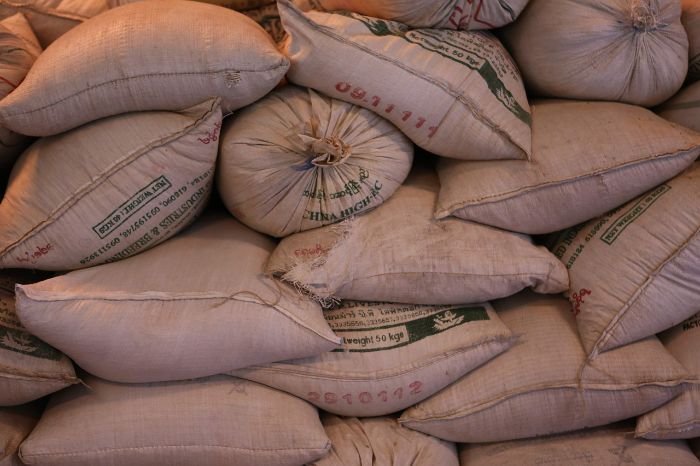
Watch electrical conductivity if you run greenhouse flats or dense container blocks. If foliage tips burn after a feed, water thoroughly to dilute salts and cut the next rate by 25-30 percent. Synthetics usually carry lower cost per unit of nutrient, but they demand tighter measuring and watering discipline to avoid leaching.
Pro tip: In sand or raised beds with high drainage, controlled-release prills reduce losses and stretch the feed across 6-12 weeks.
Complete vs single-nutrient products
Use a complete fertilizer when general maintenance is the goal and no test points to a specific shortage. If a soil report flags one element as low, reach for a single-nutrient product and correct precisely.
Follow a simple rule set – if growth stalls without clear deficiency patterns, apply a modest complete dose and recheck growth in 7-10 days. If a distinct symptom aligns with a test result, address that single element and hold other nutrients steady. Avoid stacking multiple partial blends in the same week or you will lose track of actual rates.
Choose the lane that matches your response window and site conditions. That cut keeps feeding targeted, trims waste, and sets you up for smoother decisions when you select product forms later.
Liquid Fertilizer, Granular, and Slow-Release – How Forms Work
Pick form based on response window, bed type, and how tightly you can manage water. Containers and high-drainage beds favor faster delivery. In-ground beds with steady moisture can carry a slower curve without losing momentum.
Granular and water-soluble basics
Granular fertilizer rides on irrigation or rain to move into the root zone. Broadcast evenly and water in with about 0.5 inch so pellets dissolve and salts do not sit on roots. Side-dress rows 2-4 inches from stems to avoid burn. In cool soil, expect a slower ramp; in warm, moist conditions, you will see lift inside 10-14 days.
Water soluble fertilizer acts faster because roots see nutrients immediately in the soil solution. Use it when seedlings stall or after a heavy pick. Apply during active growth on 7-14 day intervals, and water first if media is dry to prevent tip scorch. In raised beds, a light pass midseason often resets color without overloading the soil.
Pro tip: If irrigation is uneven, split the granular rate in half and apply twice 10-14 days apart to reduce spikes.
Liquid fertilizer
Liquid fertilizer covers evenly and doubles as a gentle rescue feed. For root drenches, apply to already moist soil and follow with a light rinse to move nutrients into the top 2-3 inches. For foliar feeding, spray early or late when temps sit under 85 F and leaves can dry within 60 minutes. Foliar is a nudge, not a full meal; keep the main program at the roots.
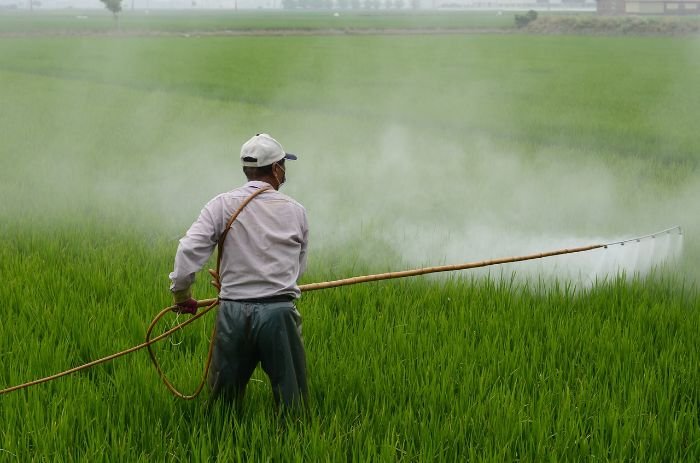
Watch for salt crust on pot rims or sudden leaf-edge burn after a feed. If either shows up, flush containers until water runs clear and reduce next mix by 25-30 percent. In hot spells, stretch intervals to the long end of the 7-14 day range so roots are not pushed while under heat stress.
Slow or controlled release
Controlled-release prills meter nutrients over time. Warmth speeds the release, so expect shorter lifespans in summer and longer in spring and fall. In beds that drain fast or where labor time is tight, slow release fertilizer keeps growth steady for 6-12 weeks with fewer passes.
Mix prills into the top 1-2 inches so they sit in the moisture zone and do not float away. Keep them 2-3 inches from crowns and woody stems. If plants still pale midcycle, layer a light water-soluble pass rather than stacking more prills. After heavy rain events over 1 inch, check growth and color; top up only if response fades early.
| Form | How it works | When to use | Typical frequency |
|---|---|---|---|
| Granular | Dissolves with irrigation into root zone | Bed prep, side-dress in rows | 3-6 weeks |
| Water-soluble | Immediate uptake from solution | Quick lift, seedling stalls, midseason reset | 7-14 days |
| Liquid concentrate | Even coverage as drench or foliar | Rescue feeding, uniform containers | 7-14 days |
| Controlled-release prills | Temperature-driven, steady trickle | High-drainage beds, low-labor sites | 6-12 weeks |
Temperature and moisture control the pace more than brand names. If conditions run hot and dry, expect faster release and space applications wider to keep growth balanced.
A clear match between form, weather, and watering keeps growth predictable and inputs low. Choose one primary form per bed, then supplement lightly only when plants ask for it.
Basic Use Rules for Fertilizer for Plants
Good feeding is timing, rate, and water control. Set the program to plant stage and weather, and you avoid waste, runoff, and fertilizer burn while keeping growth steady.
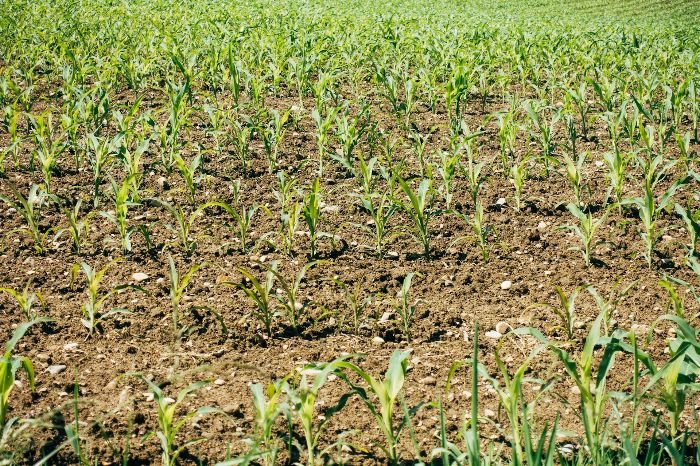
Match product to plant and growth stage
Young roots hate heavy salt loads. Seedlings and fresh transplants take quarter-strength feeds until roots explore 3-4 inches of soil. Leafy crops and lawns want steady nitrogen during active growth, while bloom and fruit set call for a more balanced push. Woody shrubs need lighter, less frequent feeding once established. In containers, fast growers outpace media reserves in 4-6 weeks and benefit from a small, regular feed rather than a big hit.
Pro tip: I pause strong feeds during heat waves over 90 F for at least 3-5 days and resume at 50-75 percent rate once night temps cool.
Rate and water-in basics
Apply to moist soil, never dry media. Pre-wet, then feed, then water in with about 0.25-0.5 inch so nutrients move into the top 2-3 inches where roots work. Keep granules 2-3 inches away from crowns and woody stems to prevent scorch. For foliar sprays, aim for early morning or evening under 85 F and give leaves 45-60 minutes to dry. In raised beds and pots, watch rims for salt crust; if it appears, flush until runoff is clear and cut the next mix by 25-30 percent.
Pro tip: If irrigation coverage is uneven, split the dose into two lighter passes 7-10 days apart to smooth peaks.
Quick decision path
Use a simple check before changing products or rates.
- Confirm moisture first – If soil is dry past 1 inch, water, wait 12-24 hours, then reassess growth.
- Scan foliage – If tips burn after feeding, flush well and reduce rate 25-30 percent next time.
- Check weather – Hold feeds if heavy rain over 1 inch is forecast in 24 hours to limit leaching.
- Verify the need – If growth stays flat after a modest feed, pull a soil test. Correct pH or a single element before adding more general fertilizer.
- Reset cadence – During peak growth, recheck beds every 7-10 days; outside peak, stretch to 2-3 weeks.
A measured routine keeps inputs low and results consistent. Match category and form to the job, feed lightly when conditions favor uptake, and let plant response guide the next move.
Closing Notes
Set a simple baseline, then make one clear choice at a time. Pick a fertilizer category for the response window you need, choose a form you can manage with your watering pattern, and test a small strip before scaling. Read new growth at day 7 and day 14; change only one variable per cycle so results stay clear.
Keep soil conditions in the plant’s preferred pH band before swapping products or rates. If color and vigor improve on the trial strip, extend the same program to the bed. If growth stays flat, run a basic soil test and target the element that shows low rather than layering mixes.
- Pick category for response window.
- Match form to watering control.
- Trial a 2×2 ft strip first.
- Check growth at 7 and 14 days.
- Change one variable per cycle.
FAQ
Is liquid fertilizer better than granular for home gardens?
Neither is universally better. Liquid fertilizer suits containers and rescue feeding because nutrients reach roots immediately; use it when you want a 3-7 day response and can keep soil evenly moist. Granular fits bed prep and steady programs; water in well and expect measurable lift in 10-14 days under warm, moist conditions. Choose by response window, irrigation control, and labor time.
Can I combine organic fertilizer with synthetic products in one program?
Yes, run an organic base for steady feed and layer a light soluble pass only when plants need a quick lift. Stagger applications by 7-10 days and track total nitrogen so you do not double-stack. If foliage tips burn or color spikes and then crashes, pause for one irrigation cycle, flush, and resume at a 25-30 percent lower rate.
How often should I fertilize a new bed during the first season?
Expect fresh mixes to feed for 4-6 weeks, then taper. In warm soil, organics release over roughly 4-8 weeks, while controlled-release prills run 6-12 weeks depending on temperature. Recheck growth at week 4, then decide: if color and vigor hold, wait; if growth stalls, apply a modest dose and reassess after 7-10 days.
Which fertilizer types are safest for beginners who water by hand?
Controlled-release prills are forgiving because they meter nutrients as temperatures rise, so one pass can cover 6-12 weeks. For containers that dry fast, a quarter-strength soluble feed on a 10-14 day cadence is reliable. Avoid heavy single doses in heat above 90 F and keep granules 2-3 inches from crowns to prevent scorch.
What weather factors change fertilizer performance the most?
Cold soil under 55-60 F slows microbial release from organics, so response stretches. Heat over 90 F increases uptake but raises burn risk, so cut rates 25 percent and extend intervals. Rain events over 1 inch can leach nitrate; hold feeds 24 hours before a forecasted downpour and check color again 2-3 days after.
How do I correct mild overfertilization without repotting?
Flush containers with 2-3 container volumes of water until runoff clears, then hold feeds for 3-5 days. In beds, irrigate to deliver roughly 1 inch of water, let soil drain, and resume at a 25-30 percent lower rate. If leaf margins stay burned after 7-10 days, switch to a lower-salt product and verify pH to rule out lockout.
When should I switch from a starter approach to maintenance feeding?
Move to maintenance once roots explore 3-4 inches of soil and new growth keeps size and color between weekly checks. After the first flower bud on annuals or the first strong flush on perennials, reduce push feeds and aim for even growth. If clipping volume drops on lawns for two consecutive mows, resume light feeding until color stabilizes.
What is the most common mistake when applying fertilizer?
Feeding onto dry soil is the mistake I see most often. Nutrients concentrate at the root surface, which burns tips and stalls growth. Always water lightly first, apply the fertilizer, then water in again so nutrients move into the top few inches of soil where roots can take them up safely.






